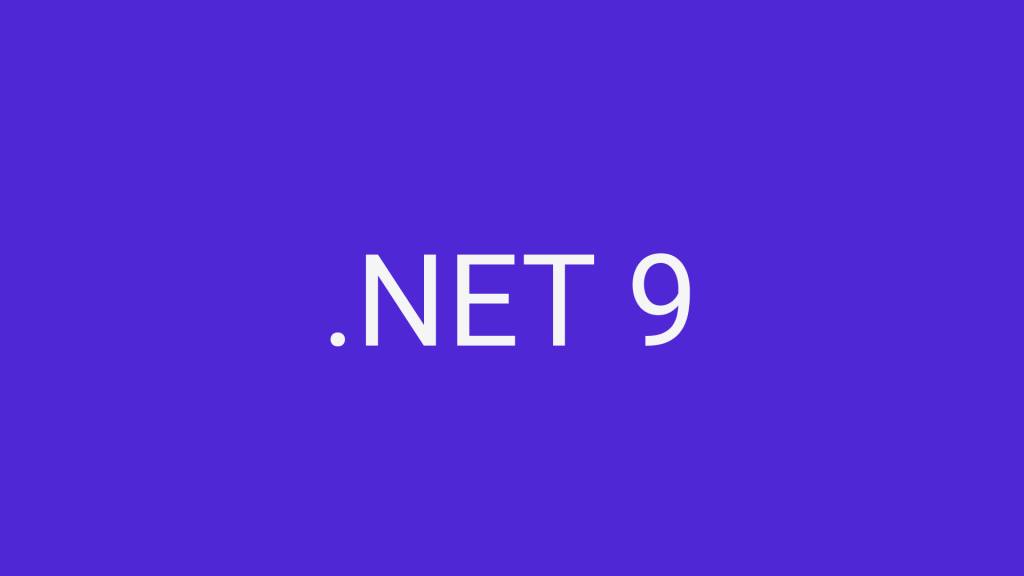Table of content
Every modernization journey begins with the same reality: migrating legacy applications to the cloud becomes unavoidable once a system reaches its operational limits.
For some enterprises, the urgency comes from invention. A bold new product demands speed, precision, and scale, yet the existing environment cannot deliver fast enough. For others, the pressure comes from competition. An on-premises product that once felt unshakable has started to slow growth, while rivals gain ground through cloud-native agility.
The question facing today’s CTOs is how to move enterprise .NET applications into the cloud in a way that safeguards continuity and amplifies value. Migration always impacts production, and that comes with real stakes: uptime, data integrity, security, performance, and cost efficiency. Each of these factors determines whether a transformation unlocks new potential or exposes hidden risk.
Through years of work with enterprises and complex .NET estates, a proven pattern has emerged. Think of it as a five-step playbook for transformation. It begins with deep visibility into the codebase — a foundational step in migrating legacy applications to the cloud, where AI reveals hidden dependencies and critical paths.. It progresses through a clear understanding of the data model, a re-examination of architecture in the context of cloud realities, a focus on operational readiness, and finally, a migration execution so seamless that end users experience uninterrupted value.
This framework creates an optimal path for leaders navigating a legacy to cloud transformation of .NET systems with clarity and control. It balances speed with stability, delivering a transformation that feels deliberate rather than disruptive.
The following pages unpack this five-step algorithm in detail. They show how Azure and AWS provide the platforms, tools, and practices to make legacy .NET applications not an obstacle but a launchpad for future growth.
Step 1: Input. System State Assessment
Before a single workload moves, gain a clear view of what you have, how it behaves, and what success looks like in the cloud. The assessment phase creates shared truth across engineering, security, finance, and product — a foundational step emphasized by leading cloud modernization services to reduce risk and misalignment early.
Quick scan — 7 prompts for self-assessment (risk & cost):
- Estate discovery & dependency map. Enumerate servers, apps, databases, and cross-calls. Use Azure Migrate and AWS Migration Hub / MGN to discover assets, map dependencies, and size targets for IaaS/PaaS landing zones. This establishes baselines for cost, risk, and wave planning.
- Business criticality & SLOs. Capture uptime targets, peak load profiles, and latency sensitivities. Treat these as guardrails for cutover, rollback, and scaling patterns in Azure or AWS.
- Data footprint & state. Quantify database size, growth rate, and file/storage patterns (uploads, shares, batch jobs). Select online migration for minimal downtime (e.g., Azure Database Migration Service, AWS DMS) and plan phased data moves for multi-terabyte estates.
- Architecture readiness. Identify on-box tweaks, IIS settings, and coupled components that relied on “someone RDP’d and flipped a switch.” Align the target with containers, Kubernetes, or managed PaaS — and account for cloud network latency between tiers and services.
- Security & compliance posture. Define role-based access, scanning, encryption, and network boundaries from day one; bake in governance and status checkpoints across waves.
Cost & licensing model. Right-size targets and align licensing (Windows/.NET, SQL). For modernization to Linux-based .NET, evaluate price-performance gains (e.g., AWS Graviton) and managed databases to reduce ops overhead.
Team & operating model. Confirm skills for cloud, containers, IaC, and CI/CD. Engage application owners and DevOps early so observability, health checks, and rollback live inside the pipeline from the first pilot.
Legacy versus Cloud Potential — four outcome metrics:
| Metric | Legacy (on-prem reality) | Cloud Potential (Azure/AWS) |
| Scalability | Capacity tied to hardware cycles and vertical scale; change windows and procurement set the pace | Elastic scale with App Service/AKS or Beanstalk/EKS; autoscaling and managed load balancing by design |
| Cost | CapEx heavy; over-provisioning for peaks; manual patching and maintenance | Pay-as-you-go with right-sizing, managed databases (Azure SQL / RDS), and price-performance wins when moving .NET to Linux/Graviton |
| Security | Perimeter-centric controls and ad-hoc server access | Identity-first access, automated patching, encryption, and continuous scanning embedded in platform governance |
| Performance | Low intra-LAN latency; tight coupling between tiers | Distributed patterns with multi-AZ design; latency-aware architecture and service boundaries to preserve user experience |
Delays increase both risk and cost over time. Programs that defer discovery and governance often stall; prescriptive guidance highlights how missing process controls derail migration waves, and how scheduled checkpoints with clear escalation paths stabilize delivery. Early assessment and piloting reduce a large share of migration risk before production cutover.
Gartner data point placeholder: insert quantified impact on run-rate cost, revenue exposure, and rework created by multi-quarter delays in cloud migration (e.g., monthly cost drag, churn exposure, and defect remediation ratios). Web browsing remains disabled in this workspace, so exact Gartner figures remain out of scope for this response.
Teams that invest in rigorous assessments consistently deliver smoother migration waves, meet SLOs, and lay the groundwork for a successful cloud transition — all without disrupting the user experience.. AI-assisted code analysis exposes dead paths and hidden dependencies, data planning aligns downtime with business tolerance, and architecture reviews shape a target that thrives on Azure or AWS — with pilots proving the path before broad release.
Step 2: Target Architecture & Landing Zone
Assessment uncovers the truth of your system; architecture defines what comes next. Once the estate is mapped, the CTO’s focus shifts to creating a landing zone — a well-architected environment in Azure or AWS that supports resilience, scalability, and governance by design.
Legacy applications were built with a certain set of assumptions. Vertical scale meant adding bigger servers. Security lived at the firewall. Performance was predictable inside a LAN, and ops teams could RDP into a box to “fix” whatever needed attention. Those assumptions dissolve the moment workloads enter the cloud. What takes their place is an architecture designed for elasticity, automation, and distributed performance.
At a high level, the shift looks like this:
| Metric | Legacy Environment | Cloud Potential |
| Scalability | Bound by hardware cycles | Elastic autoscale with containers and PaaS |
| Cost | Heavy CapEx, over-provisioned for peaks | Optimized OpEx with right-sizing and managed services |
| Security | Perimeter-based, manual access | Role-based, encrypted, continuous monitoring |
| Performance | LAN-optimized, tightly coupled | Latency-aware, multi-AZ, flexible service boundaries |
The power of the landing zone lies in how these dimensions combine to support enterprise-scale legacy migration to cloud programs with built-in governance and resilience. In practice, this turns migration from a simple lift-and-shift into a full-scale modernization of the operating model.
How Azure frames the landing zone
Microsoft codifies this journey in its Cloud Adoption Framework, anchored in the “6 Rs” of migration. For legacy .NET workloads, two stand out: Rehost (lift-and-shift to Azure VMs or App Service) and Replatform (minimal changes to unlock managed PaaS). These paths avoid disruptive rewrites while unlocking immediate scale and cost optimization.
The tooling reinforces this low-risk path:
- Azure Migrate discovers dependencies and right-sizes workloads.
- App Service Migration Tool accelerates .NET web app moves.
- Azure Database Migration Service supports online transfers with minimal downtime.
Governance is baked in. Azure Arc extends control across hybrid environments, while Policy ensures compliance and cost discipline. The architecture evolves incrementally: today’s ASP.NET app on a VM can, over time, become a .NET 8 service on Azure App Service with Azure SQL Managed Instance — all without a disruptive overnight rewrite.
How AWS defines the target
AWS approaches the landing zone through its Well-Architected Framework — a model frequently used in application modernization services cloud projects to ensure high availability, cost efficiency, and built-in security from day one. Here too, the low-risk routes dominate: Rehost to EC2 Windows instances for IIS workloads, or Replatform with Elastic Beanstalk or containers on ECS/EKS.
The tooling mirrors Azure’s in scope:
- Porting Assistant for .NET scans code for compatibility.
- App2Container wraps IIS apps into Docker images for rapid containerization.
- DMS moves SQL databases with resilience.
Landing zones here mean multi-account structures, identity guardrails, and network segmentation from day one. This ensures that as workloads move, governance scales with them — a foundational principle behind most enterprise-grade cloud app modernization services focused on long-term cost control and compliance. AWS also positions modernization as a continuum, starting with EC2 for stability, then gradually moving services into containers or Lambda functions as teams mature.
This stage is where the “promise” of legacy to cloud migration turns into an architectural reality, with built-in governance, resilient architecture, and native cloud scalability. A clear landing zone absorbs risk: it provides the scaffolding for scale, controls cost from the start, and bakes in security and observability. Without it, migrations become improvised and brittle. With it, CTOs gain a playbook for moving workloads in waves — each one predictable, governed, and aligned with business outcomes.
Every transformation starts with a moment of truth. A product that once carried the company begins to feel heavy. Release cycles slow down. Competitors unveil features at a pace that turns heads. Inside the walls, a new idea takes shape yet struggles to find time, talent, or a runway. Two currents meet: an invention that needs acceleration and a proven on-premises .NET system that needs a new stage.
This is where a five-step algorithm brings clarity. It treats migration from legacy systems to cloud as a design discipline, structured to minimize disruption and maximize business value. First comes visibility: AI analyzes large, complex codebases to surface what truly runs the business, what sleeps in dead paths, and where the hidden seams live. Then the data story: persistence models, file flows, and growth curves that shape timelines and cutovers. Architecture follows with an honest view of cloud realities — containers, orchestration, infrastructure as code, and latency that reshape service boundaries. Security and governance step in early with role-based access, encryption, policy, and observability so that the landing zone carries the weight before any application arrives. Finally, execution delivers a change so smooth that customers keep succeeding while the stack takes a new shape.
Azure and AWS supply the building blocks — discovery tools, managed platforms, migration services, and guardrails — while the algorithm supplies sequence and judgment. The aim is simple and ambitious at the same time: elevate legacy from anchor to launchpad, preserve business rhythm, and create room for the next wave of innovation
Validation Conditions — Defining Barriers and Opportunities
- If hardware dependency exceeds 50%, then pursue a hybrid-first path: extend governance with Azure Arc or AWS Outposts, stabilize workloads in place, and sequence deeper refactors after initial landing.
- If the database size exceeds 5 TB or annual growth exceeds 20%, then choose incremental, online migration (Azure DMS online mode or AWS DMS with CDC), align schedule cutovers during low-traffic periods, and verify consistency with rehearsal runs.
- If codebase complexity is high (monolith, sparse documentation, aging frameworks), then begin with AI-assisted analysis and dependency mapping (Porting Assistant, Microservice Extractor for .NET, Azure Migrate analyzers) to surface critical paths, retire dead code, and select rehost vs. replatform with intent.
- If latency sensitivity is strict (tight SLOs, real-time interactions), then design for regional proximity and multi-AZ placement, minimize synchronous hops, and introduce event-driven seams (Azure Service Bus, Amazon SQS/SNS) where appropriate.
- If compliance and role-based control are mandatory (PCI, HIPAA, GDPR), then establish landing-zone guardrails first — identity and access, encryption in transit/at rest, logging, network segmentation, and change management — and progress to workload moves after controls clear audit.
Modernization succeeds when teams feel empowered and supported. Engineers gain space to do their best work, product leaders gain confidence in timelines, security gains durable controls, and finance gains a model that scales with demand. The five-step algorithm does more than move workloads; it aligns people, process, and platform around a shared outcome.
When code is understood, data is shepherded with care, architecture breathes with the cloud, and governance travels with every change, something powerful happens: the organization grows lighter. Releases land with grace, resilience rises, and customers experience uninterrupted value. That feeling — steady hands guiding meaningful change — stays with a company.
From here, the path is clear. Carry the discipline of Step 1 and Step 2 forward into data movement and cutover design, keep learning through small waves, and let momentum build. The cloud becomes familiar territory, legacy becomes a foundation you trust, and the next idea arrives with a welcome sense of possibility.
Step 3: Processing Cycle — Iterative Migration in Four Passes
Modernization delivers its best outcomes through rhythm. Instead of a single, high-pressure cutover, the program advances in compact cycles that build proof, sharpen patterns, and reduce uncertainty.
Assess: clarity before motion
Begin by selecting a meaningful slice of the estate — especially if you plan to migrate.NET application to Azure — such as one web workload, one API, one background job, and the database surface they touch.. Map dependencies, data flows (tables, files, batch windows), and latency envelopes. Define success criteria that combine technical and commercial signals: availability targets, response time thresholds, and a first view of cost to serve. Capture rollback thresholds so pipelines know exactly when to return to a prior release.
Actions:
- Group target apps into a pilot wave and document cross-calls.
- Establish landing-zone prerequisites (identity, policy, logging, network).
- Baseline performance and cost on-prem for A/B comparison in the cloud.
Azure / AWS tools:
- Azure Migrate for discovery and dependency mapping; Azure Database Migration Service for online plans.
- AWS Migration Hub and Application Migration Service (MGN) for inventory and replication; AWS Database Migration Service for data paths.
Timeline:
- A focused 2–4 week assessment sprint per pilot wave, with a written exit review.
Migrate (Pilot) — small slice, real stakes
Move a representative workload into the landing zone created in Step 2. Prioritize rehost or replatform to establish stability and speed, while leaving room for containerization or serverless in later waves. Keep configuration as code and wire health probes from day one.
Actions:
- Execute the pilot move into App Service or EC2/Beanstalk/ECS/EKS.
- Migrate the database via online replication and schedule cutover during a low-traffic window.
- Stand up CI/CD with health-gated releases and a ready rollback path.
Azure / AWS tools:
- Azure App Service Migration Tool; Azure SQL Managed Instance or Azure SQL Database with DMS online; Application Insights for telemetry.
- EC2 Windows with ALB and Auto Scaling for quick rehost; Elastic Beanstalk or ECS/EKS for replatform; CodePipeline/CodeBuild for releases; CloudWatch for signals.
Timeline:
- A 2–4 week pilot iteration with a go/no-go checkpoint and a rehearsed rollback.
Test (ROI Check) — prove it before scaling
Validate function, integration, and performance against the on-prem baseline. Exercise health checks, smoke tests, and fault scenarios. Review the commercial picture alongside the technical one: instance right-sizing, burst behavior, incident rates, and early user signals.
Actions:
- Run performance tests that mirror peak windows; compare latency and throughput to baselines.
- Validate SLOs and error budgets; confirm resilience across availability zones.
- Review cost telemetry and create first right-sizing recommendations.
Azure / AWS tools:
- Azure Load Testing (or equivalent harness) plus Application Insights and Log Analytics.
- JMeter or k6 on EC2 for load; CloudWatch metrics and X-Ray traces; Well-Architected checks for high availability posture.
Timeline:
- Keep testing within the same 2–4 week cycle; feed findings straight into Optimize.
Optimize: tune, document, and lock the pattern
Close the loop by tuning capacity, tightening autoscale, and strengthening guardrails. Express the pilot as a reusable blueprint so the next wave moves faster with fewer open questions.
Actions:
- Right-size compute and storage; refine autoscale thresholds and health probes.
Harden identity, encryption, logging, and alerting; finalize dashboards for shared visibility. - Capture the blueprint: Infrastructure as Code modules, CI/CD templates with health-gated rollback, and runbooks for cutover and rehearse.
Azure / AWS tools:
- Azure ARM/Bicep or Terraform; Azure Policy for guardrails; curated App Insights dashboards.
- AWS CloudFormation or CDK; Well-Architected and Launch Wizard to validate architecture and cost posture.
Timeline:
- Complete optimization within the pilot window or as a short 1–2 week follow-on, then promote the blueprint to the program playbook.
Repeat in Waves
With a proven pattern, run the cycle across the remaining estate in planned waves. Each pass compounds knowledge, reduces variance, and increases confidence. The outcome is a steady drumbeat of migrations that preserve business rhythm while unlocking cloud scale, cost efficiency, security depth, and flexible performance.
Step 4: Output Results: Success Metrics and ROI
Migration only matters when it pays back. After the iterative cycles have stabilized production, the program turns to evidence: concrete numbers that prove value to finance, operations, and the board.
The Core Formulae:
- Annual Cost Reduction: Savings₁ = (Legacy OPEX – Cloud OPEX) × 12 months
- Pay-Back Period: Months_to_Payback = Migration Cost ÷ Monthly Savings
- Three-Year ROI: ROI₃y % = [(Savings₁ × 3) – Migration Cost] ÷ Migration Cost × 100
Add qualitative lift — deploy-per-day, mean-time-to-restore, release defect rate — to capture agility and resilience, but finance typically green-lights on the three equations above.
Figures combine compute, storage, licensing, and ops labor. Savings exclude new-feature revenue to keep the comparison conservative.
These gains rarely fit neatly into spreadsheets, yet they amplify financial ROI by reducing outage cost, accelerating feature delivery, and protecting brand equity.
Forward View: 2025 +
Industry analysts (IDC 2024 Cloud Pulse) project that by 2026, more than 80 % of enterprise production workloads will run on public or hybrid cloud platforms, driven by:
- Right-sizing economics. Graviton-class ARM, Azure Cobalt, and sustained-use discounts close the cost gap between lift-and-shift and on-prem refresh cycles.
- Platform productivity. Low-ops PaaS and serverless cut average “infrastructure toil” by 40 % in mid-market IT teams.
- AI-assisted optimization. Continuous cost-and-performance tuning engines built into Azure and AWS identify idle capacity, rightsizing 24/7.
- Compliance automation. Cloud-native policy engines halve the audit effort for regulated industries, making cloud not just cheaper but easier to certify.
Programs aligning to these trends capture compounding returns: lower unit cost today, faster innovation tomorrow, and simplified governance at scale.
Without transparent metrics, modernization feels like a leap of faith — which is why a seasoned legacy software modernization company anchors the process in measurable ROI, steady cadence, and business-aligned outcomes.
Step 5: Optimization: Post-Migration Strategies
Once production has shifted and the first waves are steady, the work enters its most rewarding phase: turning a successful migration into a better operating model. This is where observability deepens, automation expands, and every release carries a sense of calm confidence.
Make observability your daily rhythm
Treat telemetry as a product in its own right. Instrument applications for end-to-end traces and business KPIs, then surface them on shared dashboards for engineering, ops, security, and product. Azure Monitor and Application Insights provide a rich lens into .NET services, while Log Analytics centralizes diagnostics and performance data; on AWS, CloudWatch and X-Ray bring a similar depth for metrics and distributed tracing. Teams that wire alerts to error rates, latency, and saturation thresholds gain time to act before customers feel friction.
Carry CI/CD forward with guardrails
Pipelines deserve the same care as code. Express environments with infrastructure-as-code, gate releases with health checks, and keep a proven rollback ready in every stage. Azure Pipelines or GitHub Actions on one side, and AWS CodePipeline/CodeBuild on the other, orchestrate build-test-deploy; when a post-deploy health probe fails, the pipeline can automatically return to the last good version. Regular status checkpoints and an escalation path create clarity across stakeholders and sustain momentum through future waves.
Tune for scale, cost, and resilience
Right-size compute and storage, refine autoscaling thresholds, and validate high-availability patterns. AWS’s Well-Architected Framework and tools such as Launch Wizard guide multi-AZ placement and autoscaling groups; Azure’s guidance encourages autoscale and health probes for containerized apps. For continuity, fold disaster-recovery rehearsals into the release calendar; Azure Site Recovery remains a strong choice for continuity planning.
Prove stability through purposeful testing
Keep a standing test harness that mirrors production: functional, integration, and load scenarios benchmarked against pre-migration baselines. Exercise chaos drills (AZ failover, network faults) in lower environments, record results, and elevate patterns that improve time-to-recover. Treat rollback as a first-class capability and rehearse it until the muscle memory feels natural.
Expand platform automation
Codify the best pilot into reusable modules: Terraform, ARM/Bicep, or CloudFormation/CDK for infra; standardized CI/CD templates with health-gated promotion for app teams. This reduces variance across waves and preserves quality at scale.
Keep people aligned
The most elegant dashboards matter when the right people see them at the right time. Build a cadence of cross-functional reviews: engineering trends, security posture, cost and performance envelopes, and product signals. Involve DevOps early and consistently so logging and observability evolve alongside features.
Monitoring Playbook: Six Ongoing Steps
- Instrument everything that matters. Capture service health (CPU, memory, errors), user experience (latency, Apdex), and business flow signals (orders, sessions). Azure Monitor + Application Insights on Azure and CloudWatch + X-Ray on AWS deliver this depth.
- Alert with intent. Tie alerts to SLOs and error budgets; page on customer-impacting signals and route everything else to triage queues with clear owners.
- Automate rollback and promotion. Keep health-gated deploys in CI/CD, with a ready return to the last good release; snapshot IaaS images and tag container images for rapid re-deploys.
- Practice resilience. Validate multi-AZ placement and autoscale behaviors; schedule failover drills and capture learning in runbooks, using Well-Architected checks as a guide.
- Right-size continuously. Review utilization and cost monthly; adjust instance classes, reservations/commitments, and storage tiers. Observability plus automation narrows waste over time.
- Share the picture. Publish live dashboards to stakeholders and hold regular checkpoints with a named escalation path; this maintains shared awareness and steady delivery.
The feeling you want to keep. When monitoring hums, pipelines carry guardrails, and resilience drills feel routine, the organization experiences a shift: releases feel lighter, late-night pages grow rare, and teams gain space to build. Step 5 turns cloud foundations into operational grace — the kind customers feel even if they never see the architecture behind it.
Sum Up
Every system carries accumulated expertise, and modernization functions as a leadership discipline with a clear, repeatable sequence. The five-step algorithm creates shared visibility across code and data, establishes a governed landing zone, sets an operating rhythm, and delivers cloud migration that elevates user value through release speed, reliability, cost efficiency, and security depth. Leaders who work through discovery, small waves, and explicit SLOs convert existing assets into a platform for faster delivery, stronger economics, and resilient operations; migration becomes a steady capability within engineering culture rather than a one-off event.
Select one production workload, run automated dependency mapping, lock success criteria with SLOs and performance budget, stand up a minimal landing zone, execute an online data move for the pilot, measure deltas in latency, cost, and availability, codify the pattern in IaC and CI/CD with health gates, then repeat in waves. Meet after the talk or drop a contact, and the team will share the starter pack: assessment checklist, AI-assisted .NET compatibility scan, ready-made Azure/AWS IaC modules, and a CI/CD scaffold with health-based rollback for safe releases.
Frequently Asked Questions
-
How to start migrating legacy applications to the cloud without breaking SLOs and with a pilot wave first?
Begin with a small but real slice: one web app, one API, one background job with live traffic. Formalize SLOs (uptime, latency, error rates) and wire health into the pipeline from day one: health checks, smoke tests, and automatic rollback. Our approach is iterative “small-slice” moves inside a prepared landing zone, with online data replication and clear cutover windows. That lowers risk because every release has a rollback plan and crisp go/no-go criteria.
-
What architecture patterns matter when migrating legacy applications to the cloud for enterprise.NET workloads on Azure/AWS?
Design for elasticity and observability by default. Decouple state (databases, files) from compute, minimize synchronous hops, and plan for multi-AZ and autoscaling. For.NET this usually means: start with a dependable rehost (fast, stable baseline) or a replatform (App Service/ECS/EKS) with readiness/liveness probes, centralized logs, and tracing. Our approach favors “working simplicity” first (a stable PaaS/containers foundation), then evolutionary improvements — no overnight monolith rewrite. Architecture isn’t a pretty diagram; it’s a set of proven choices that don’t break under load and are easy for teams to run.
-
Which tools should a CTO pick for legacy to cloud migration of IIS/ASP.NET apps (Azure Migrate, AWS App2Container, DMS)?
Tools matter, but sequence decides outcomes. We start with automated inventory and dependency mapping (so nothing gets lost), then a test migration with online database movement, and only then layer on accelerators. For IIS/ASP.NET this often means: dependency registry + containerization (App Service Migration Tool or App2Container), online DMS for minimal downtime, and CI/CD with quality gates. Our approach is to combine tools so that each step is reproducible and measurable. Not a tool list, but a map — tools are the gears, not the steering wheel.
-
How to plan data cutover in migration from legacy systems to cloud with online replication and minimal downtime?
Separate the “long copy” from the “short switch.” Run continuous replication (CDC), verify consistency, align dependent processes (batches, queues, file ingests), and schedule the cutover in a low-traffic window. Non-negotiables: checklists, rehearsals, rollback plans, change freezes, and coordination with product/support. Our approach treats data as first-class; cutover is a controlled operation with telemetry at each stage so the business sees we’re not storming the castle — we’re moving with an escort and a convoy.
-
What landing zone guardrails are mandatory for a safe legacy to cloud move (identity, policy, network, observability)?
Guardrails aren’t bureaucracy; they’re the harness on a steep climb. Minimum set:
- Identity-first access (RBAC), secrets in managed vaults.
- Policy for tags/network/encryption/backups; automated checks in CI.
- Network: private subnets, egress control, WAF/ALB, multi-AZ.
- Observability: centralized logs, metrics, tracing, and shared dashboards.
Our approach lays the rails (landing zone) before rolling the train (workloads). That discipline makes migration waves predictable and keeps incidents rare and contained.
-
How to estimate ROI and payback for legacy migration moving to the cloud using run-rate cost and right-sizing analysis?
Don’t hand-wave — calculate. Compare today’s run-rate (compute, storage, licenses, ops) to the cloud run-rate with right-sizing and managed services. Add effects: fewer outages, faster releases, lower incident cost. Our approach runs A/B comparisons after each pilot — latency, stability, and spend — then recommends instance classes, reservations/commitments, and storage tiers.












